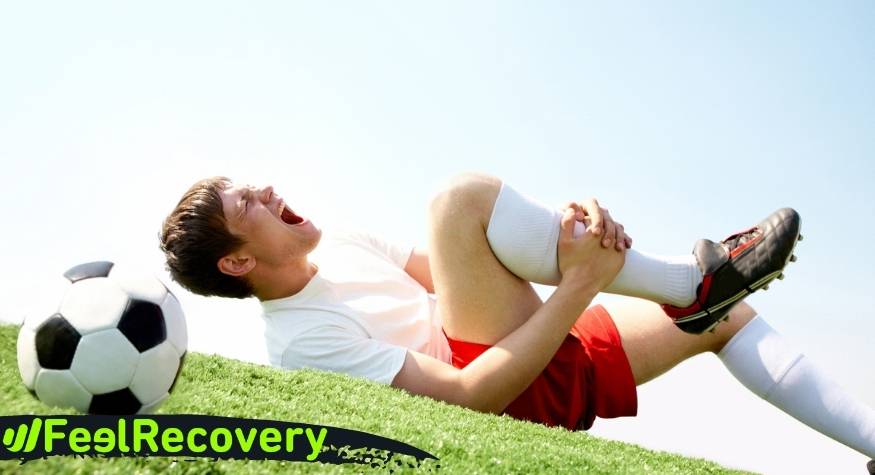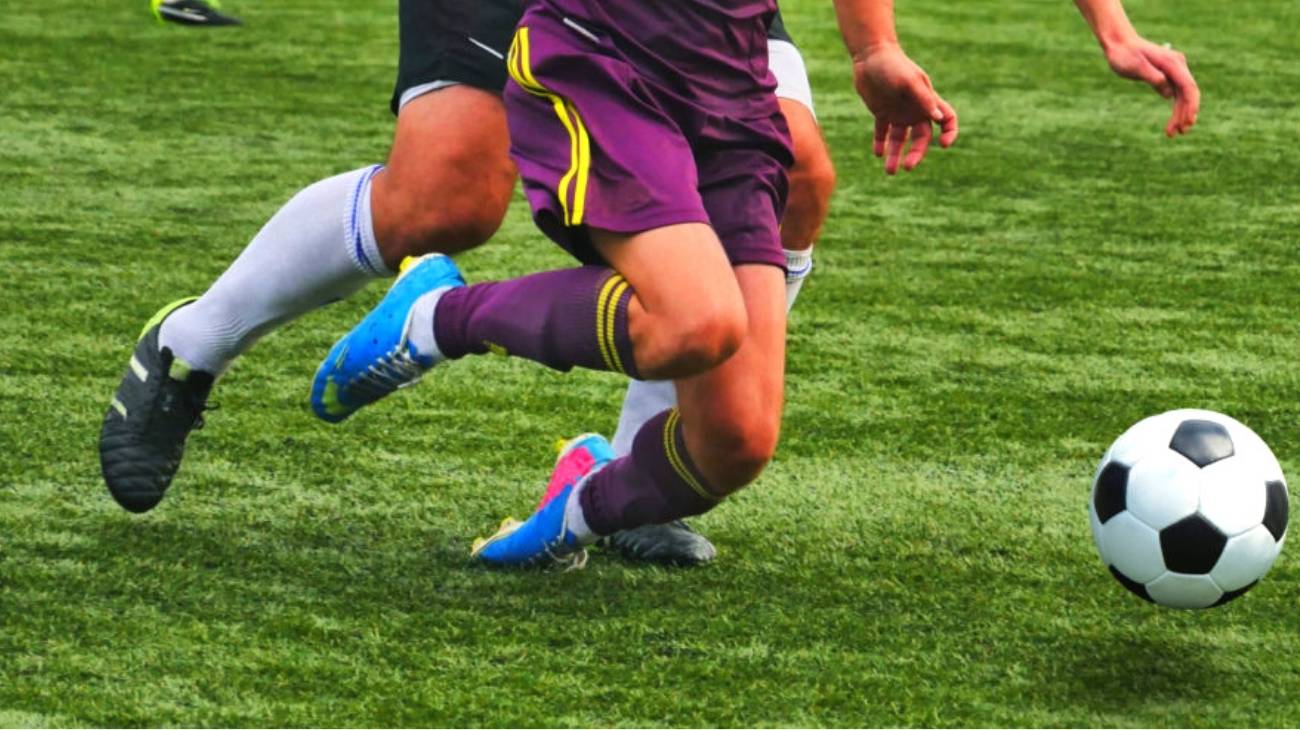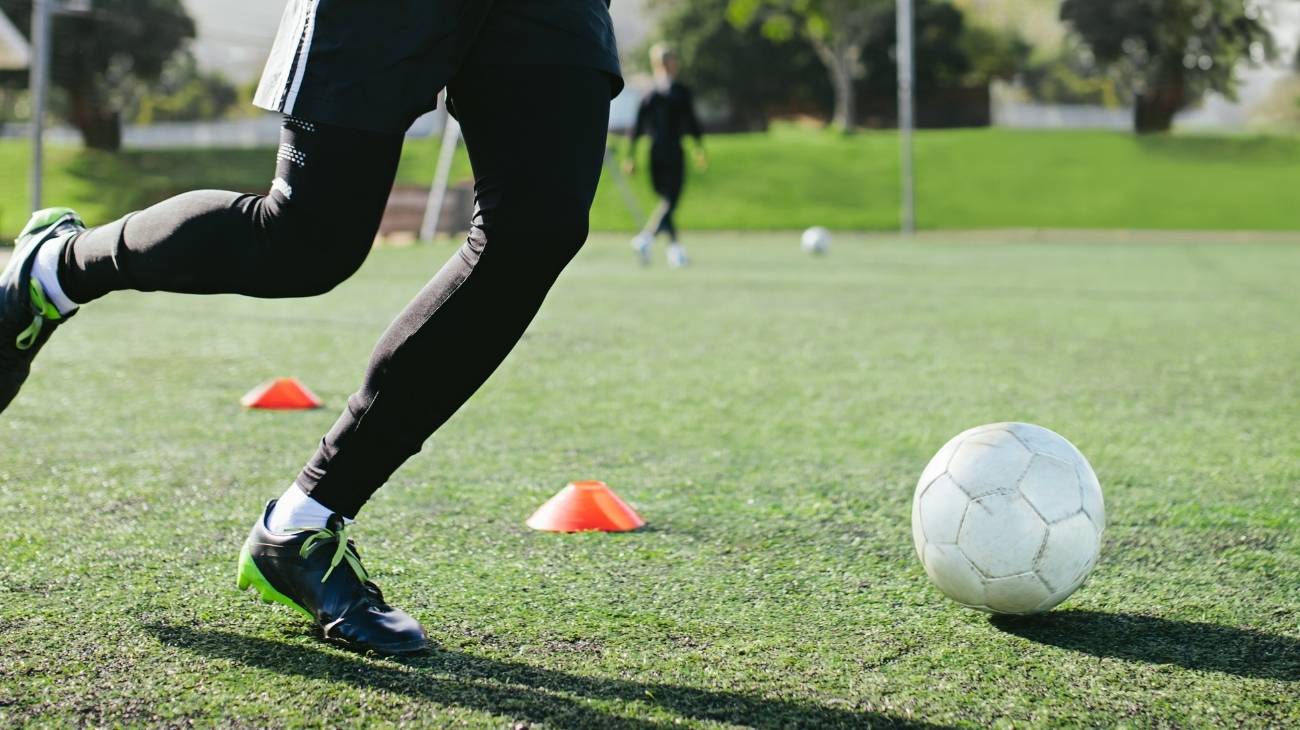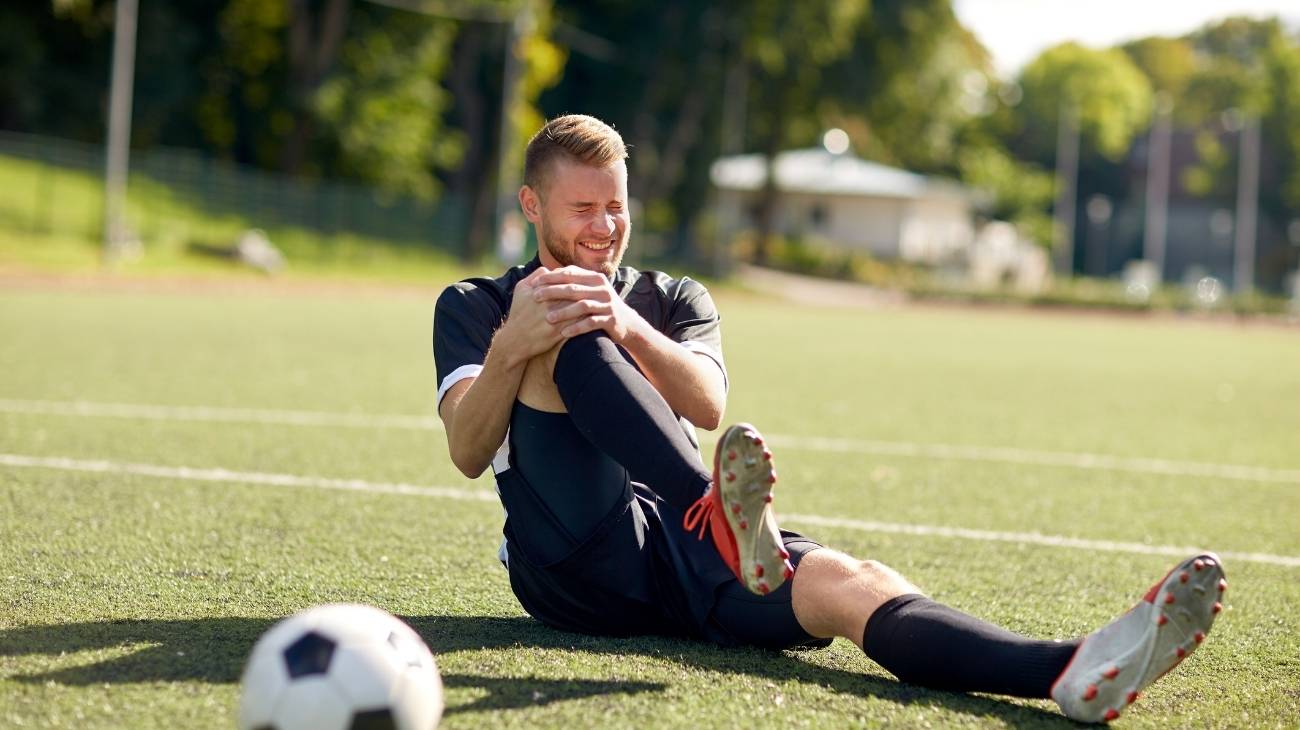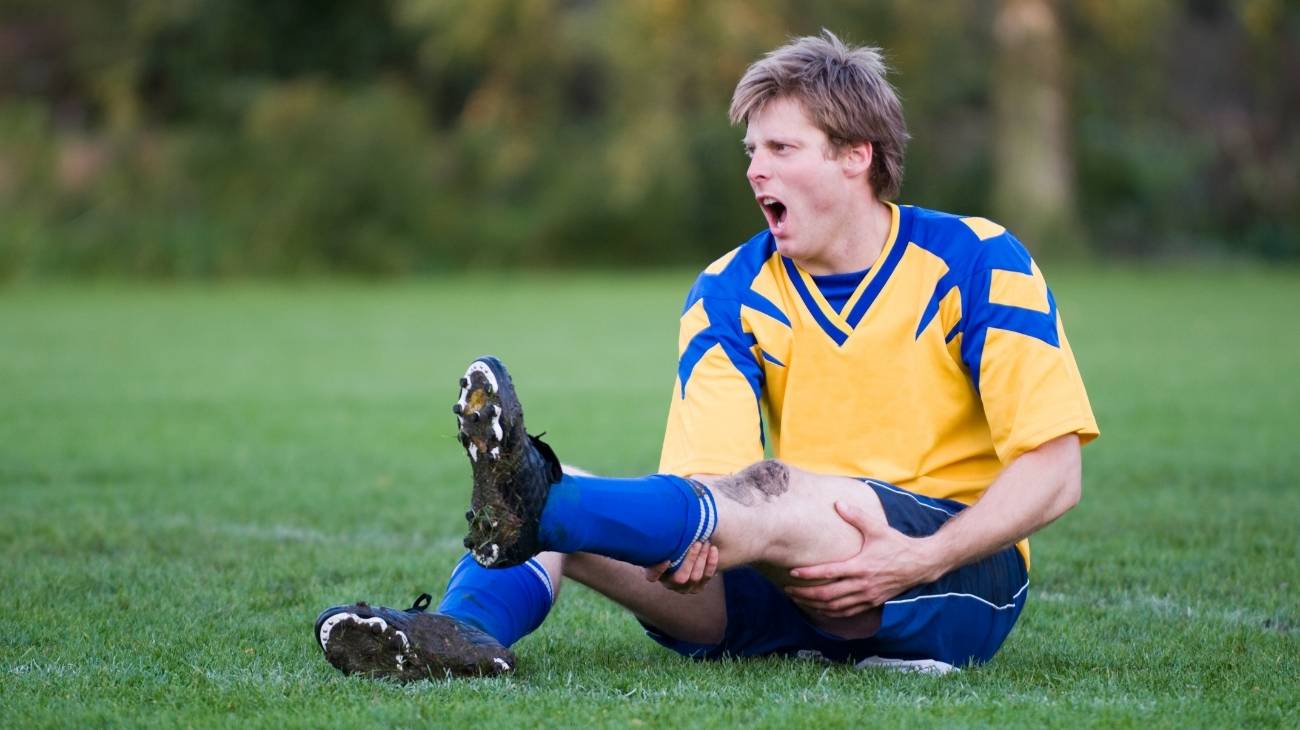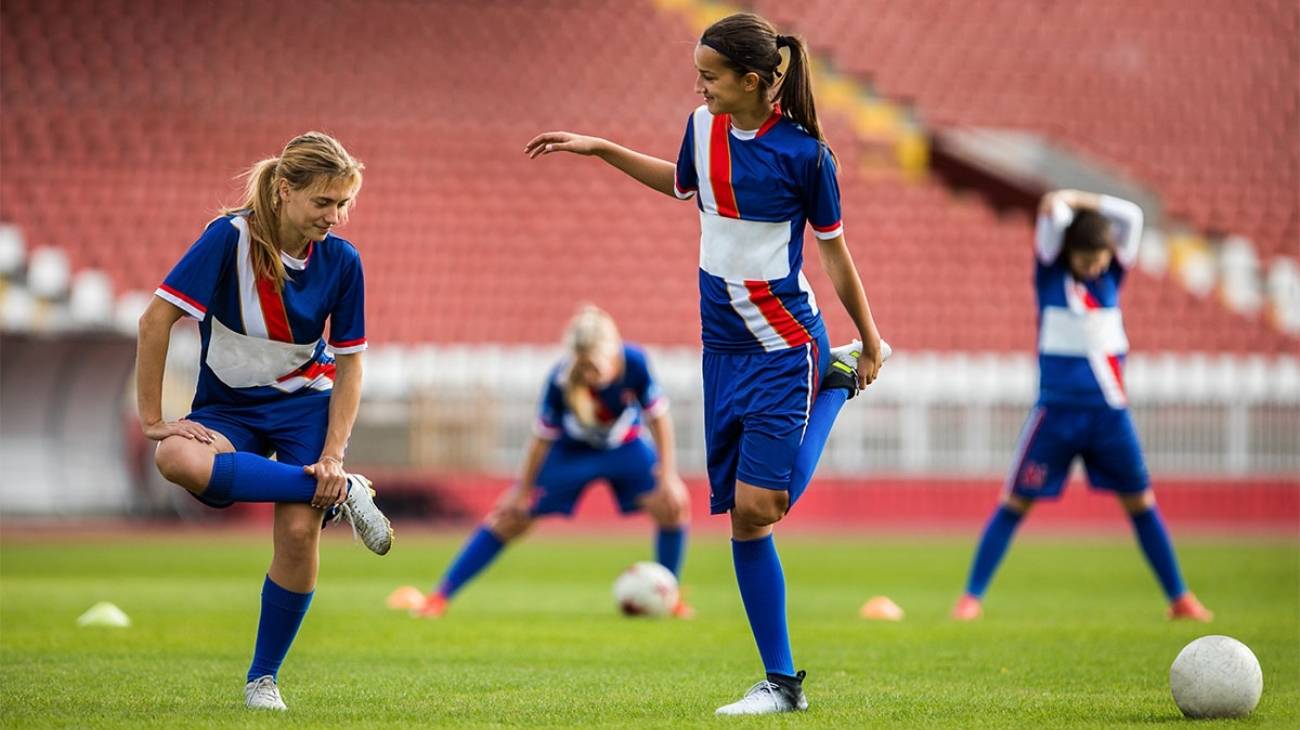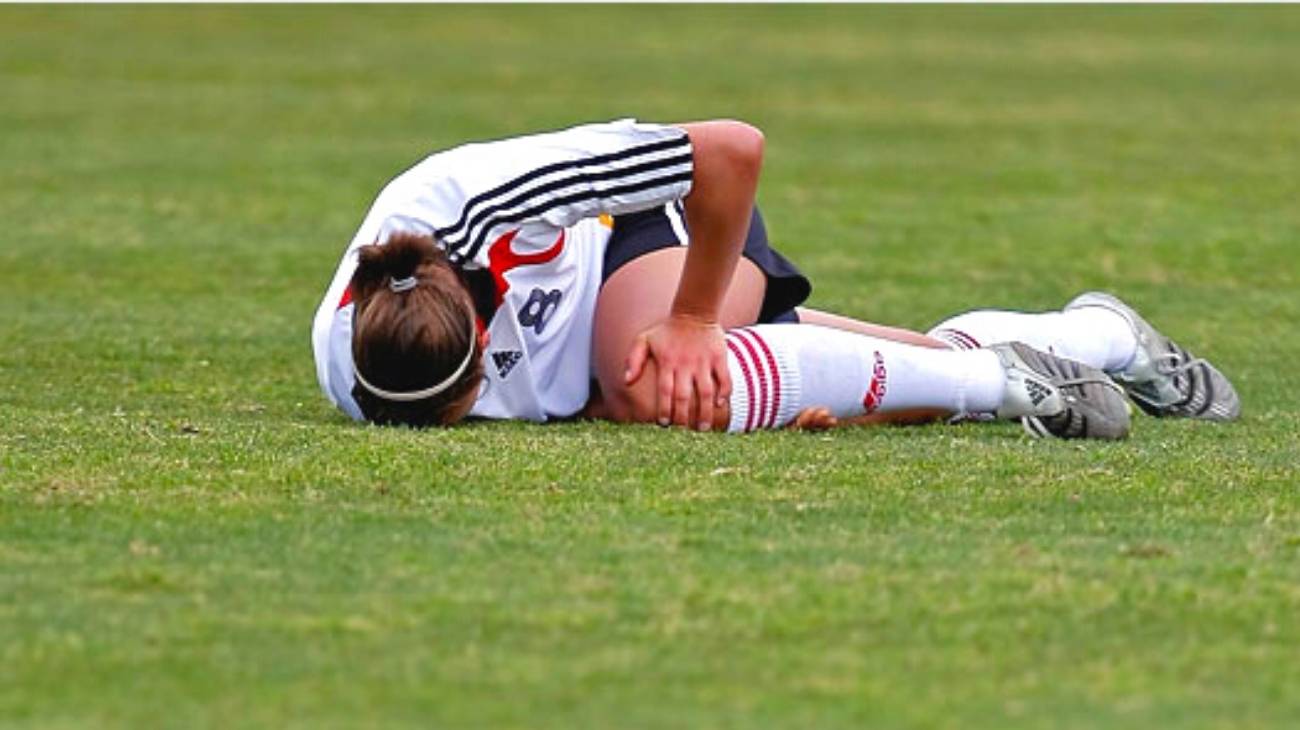Soccer is one of the most popular sports worldwide. It is a high-performance sport that involves jumping, sprinting, running, collisions, decelerations and sudden changes of direction; all of which makes injuries during soccer quite common.
The calves are located at calf level, at the back of the leg between the ankle and the thighs, and are frequently injured in soccer players and runners. Here we will show you what the most common injuries in this area are and how to treat them.
What are the most common types of calf injuries when playing soccer?
The calf muscles are attached to the femur and ankle. They are oval-shaped muscles that are prone to over-stretching. They are made up of two heads, one medial and one lateral and form the most superficial muscles of the calf, crossing two joints, starting above the knee and joining the calcaneus at the ankle via the Achilles tendon.
The most common injuries that occur in the calf muscles include:
Muscle overloads
They are caused by muscle stiffness caused by muscle fatigue, insufficient recovery time and excessive exercise that causes lactic acid build-up. Its symptoms are based on intense pain and a feeling of mobility of the muscle (it feels displaced towards the upper part), however, it is a temporary ailment that does not usually last more than a few days.
It is very common in soccer, especially if we train frequently in an amateur team where the workload each week is high. It is uncommon in those who play as amateurs and play only a few matches a week without any training during the week, as the workload on their muscles will be much less.
Cramp
Cramps are caused by a neuromuscular disturbance in a particular area that causes the muscle to contract. It is usually caused by fatigue from overuse of the muscle, although it may also indicate low magnesium and/or potassium levels.
They tend to be very common in matches in which we demand and exceed the resistance of the muscle. Symptoms of contracture can include intense and constant pain, swelling with redness and muscle weakness. If these symptoms occur, it is important to see a doctor, as contractures are generally harmless injuries, but could be a sign of muscle damage.
Calf strain
This is a degree of muscle injury that anticipates a tear, but has a good prognosis. It occurs when the calf muscles are usually brought to their maximum point of elongation, during a run to get away from an opponent, or even by an opponent's tackle. On palpation during the physical examination, it can be noted that the pain is concentrated in a single point.
Generally, this injury occurs when there is not a good warm-up, very high intensity exercises are performed without previous training, excessive effort and poor flexibility. This type of injury heals well with the application of ice and rest for at least one day, using lifting and gentle stretching techniques combined with massage.
Muscle tears
Occur when the muscle fibres of the calf muscles or triceps suralis tear. This type of injury is also called a fibrillar rupture and is an emergency for the soccer player as it causes severe pain. Normally these injuries are caused by over-exertion of the muscle, excessive stretching beyond its capacity, extensive training, inadequate warm-up, poor hydration, poor footwork or may even indicate cardiovascular problems.
These problems result in inadequate blood supply to the muscle, so it does not have an effective supply of nutrients, and by not resting, the muscle fibres become tense, limiting their ability to stretch. Depending on the severity and limitations of the injury, the athlete may only need a few weeks of rest or may require surgery if the muscle is completely torn.
Tibia or fibula fracture
These are the bones in the calf that have tremendous strength, but a strong tackle from an opponent could cause them to break one, the other or even both. This is one of the worst injuries for a soccer player at any level, as it is not only extremely painful, but also requires an almost indefinite period of time off work, but certainly at least 6 months.
The fracture can be partial, which would be the lowest level of this injury, but as it is a strong blow it can be total, sending the athlete directly to the operating theatre to proceed to reposition the bones in place and fix them with pins or surgical screws.
Best products for the recovery of calf and leg injuries in soccer players
Bestseller
-
2 Calf Compression Sleeve (Black/Gray)
$19.95 -
2 Calf Compression Sleeve (Green/Navy)
$19.95 -
2 Calf Compression Sleeve (Pink/Bordeaux)
$19.95 -
Acupressure Mat and Pillow (Black/Gray)
$49.95 -
Acupressure Mat and Pillow (Green/Navy)
$49.95 -
Acupressure Mat and Pillow (Pink/Bordeaux)
$49.95 -
Acupressure Pillow (Black/Gray)
$29.46 -
Acupressure Pillow (Green/Navy)
$29.46 -
Acupressure Pillow (Pink/Bordeaux)
$29.46 -
Foot Massage Roller for Plantar Fasciitis (Black)
$19.95 -
Foot Massage Roller for Plantar Fasciitis (Green)
$19.95 -
Foot Massage Roller for Plantar Fasciitis (Pink)
$19.95 -
Heating Pad for Microwave Classic Bottle Shaped (Hearts)
$19.95 -
Heating Pad for Microwave Classic Bottle Shaped (Oxford)
$19.95 -
Heating Pad for Microwave Classic Bottle Shaped (Sport)
$19.95 -
High Density Foam Roller for Muscle (Black/Gray)
$29.95 -
High Density Foam Roller for Muscle (Green/Navy)
$29.95 -
High Density Foam Roller for Muscle (Pink/Bordeaux)
$29.95 -
Ice Massage Roller Ball (Black)
$39.95 -
Ice Massage Roller Ball (Green)
$39.95 -
Ice Massage Roller Ball (Pink)
$39.95 -
Microwave Heating Pad for Back Pain Relief (Extra Large) (Hearts)
$29.95 -
Microwave Heating Pad for Back Pain Relief (Extra Large) (Oxford)
$29.95 -
Microwave Heating Pad for Back Pain Relief (Extra Large) (Sport)
$29.95 -
Microwaveable Heating Pad for Pain Relief (Hearts)
$19.95 -
Microwaveable Heating Pad for Pain Relief (Oxford)
$19.95 -
Microwaveable Heating Pad for Pain Relief (Sport)
$19.95 -
Pack 2 In 1 Foam Roller High + Soft Density (Black/Gray)
$29.95 -
Pack 2 In 1 Foam Roller High + Soft Density (Green/Navy)
$29.95 -
Pack 2 In 1 Foam Roller High + Soft Density (Pink/Bordeaux)
$29.95 -
Soft Density Foam Roller for Recovery (Black)
$29.95 -
Soft Density Foam Roller for Recovery (Green)
$29.95 -
Soft Density Foam Roller for Recovery (Pink)
$29.95 -
Sport Compression Socks (1 Pair) (Black/Gray)
$19.95 -
Sport Compression Socks (1 Pair) (Green/Navy)
$19.95 -
Sport Compression Socks (1 Pair) (Pink/Bordeaux)
$19.95 -
Trigger Point Massage Stick (Black)
$14.95 -
Trigger Point Massage Stick (Green)
$14.95 -
Trigger Point Massage Stick (Pink)
$14.95
How to apply the RICE therapy to treat calf injuries in soccer players?
The first treatment given to the injuries produced by a sporting practice is fundamental for the progress or definitive healing of the same, which is why various parameters were established to help the rescuer or the injured person themselves to determine what they have to do and when they have to do it.
The RICE therapy is the same as the PRICE therapy, but the latter has been updated as we will see below:
- Protection: The injury must be prevented from progressing and worsening by using joint immobilisers, splints, bandages or plaster casts depending on what is required for the calf injury. If it is a simple contracture, this point may be omitted.
- Rest: muscle injuries in the calf usually improve considerably with absolute rest, either in bed or with the use of implements to rest the limb such as crutches, wheelchairs, among others.
- Ice: the application of ice, gel packs or cold compresses produces vasoconstriction of the calf, and therefore has an anti-inflammatory and analgesic effect.
- Compression: bandages can be used to control the oedema caused by the calf injury. In people who have this type of injury, it is recommended to use compression stockings or calf sleeves and rest stockings that are used after intense exercise.
- Elevation: elevating the affected leg decreases the blood supply and reduces the oedema caused by the injury, favouring muscle recovery.
References
- Hägglund, M., Waldén, M., & Ekstrand, J. (2013). Risk factors for lower extremity muscle injury in professional soccer: the UEFA Injury Study. The American journal of sports medicine, 41(2), 327-335. https://journals.sagepub.com/doi/abs/10.1177/0363546512470634
- Witvrouw, E., Danneels, L., Asselman, P., D'Have, T., & Cambier, D. (2003). Muscle flexibility as a risk factor for developing muscle injuries in male professional soccer players: a prospective study. The American journal of sports medicine, 31(1), 41-46. https://journals.sagepub.com/doi/abs/10.1177/03635465030310011801
- Ekstrand, J., Krutsch, W., Spreco, A., van Zoest, W., Roberts, C., Meyer, T., & Bengtsson, H. (2020). Time before return to play for the most common injuries in professional football: a 16-year follow-up of the UEFA Elite Club Injury Study. British journal of sports medicine, 54(7), 421-426. https://bjsm.bmj.com/content/54/7/421.abstract
- Svensson, K., Eckerman, M., Alricsson, M., Magounakis, T., & Werner, S. (2018). Muscle injuries of the dominant or non-dominant leg in male football players at elite level. Knee Surgery, Sports Traumatology, Arthroscopy, 26, 933-937. https://link.springer.com/article/10.1007/s00167-016-4200-4
- Ueblacker, P., Haensel, L., & Mueller-Wohlfahrt, H. W. (2016). Treatment of muscle injuries in football. Journal of Sports Sciences, 34(24), 2329-2337. https://www.tandfonline.com/doi/abs/10.1080/02640414.2016.1252849
- Arnason, A., Sigurdsson, S. B., Gudmundsson, A., Holme, I., Engebretsen, L., & Bahr, R. (2004). Risk factors for injuries in football. The American journal of sports medicine, 32(1_suppl), 5-16. https://journals.sagepub.com/doi/abs/10.1177/0363546503258912
- Östenberg, A., & Roos, H. (2000). Injury risk factors in female European football. A prospective study of 123 players during one season. Scandinavian journal of medicine & science in sports, 10(5), 279-285. https://onlinelibrary.wiley.com/doi/abs/10.1034/j.1600-0838.2000.010005279.x
- Ekstrand, J., Hägglund, M., & Waldén, M. (2011). Epidemiology of muscle injuries in professional football (soccer). The American journal of sports medicine, 39(6), 1226-1232. https://journals.sagepub.com/doi/abs/10.1177/0363546510395879
- Hallén, A., & Ekstrand, J. (2014). Return to play following muscle injuries in professional footballers. Journal of sports sciences, 32(13), 1229-1236. https://www.tandfonline.com/doi/abs/10.1080/02640414.2014.905695
- Hespel, P., Maughan, R. J., & Greenhaff, P. L. (2006). Dietary supplements for football. Journal of Sports Sciences, 24(07), 749-761. https://www.tandfonline.com/doi/abs/10.1080/02640410500482974

